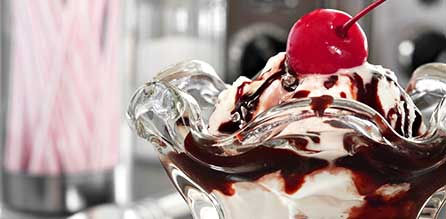For people trying to lose or maintain their weight, "diet foods" like Halo Top ice cream, protein-pumped cakes and chocolates and chips, and other low-calorie treat foods can be enticing. These foods are marketed as guilt-free treats, promising the satisfaction of indulgence without consequence. But there are hidden pitfalls associated with relying too heavily on these foods.
"Diet foods" promote consumption of large portions of treat foods. Low-calorie ice creams often boast significantly fewer calories than their traditional counterparts. You can eat a whole tub of Halo Top for the same calories as a couple of small scoops of real ice cream - sounds like a dream! But it promotes the idea that appropriate portions of indulgences are very large while also reinforcing behaviour that could mirror disinhibited eating, or loss of control around food that can to consuming large portions of indulgences. For weight loss, basic health or otherwise, a much healthier approach in the long term is to determine what portions of real indulgences are satisfying to you, and how you can make those work with your preferred dietary approach.
The very concept of a "diet food" suggests that some foods don't fit in your diet. Relying on these products as a substitute for regular indulgences may reinforce the idea that certain foods are inherently "bad" or should be avoided. This dichotomous thinking can contribute to an unhealthy relationship with food and perpetuate feelings of guilt or shame when enjoying higher-calorie treats. A better approach would allow for all foods to fit in your diet in a way that you both enjoy and allows you to work toward your goals.
Diet foods don't really provide any nutrients. And while treats are rarely about nutrient density, because these foods can be so filling, they may displace some "real foods" you would have otherwise eaten. You might create a balanced dessert or treat by eating a piece of fruit and a small bar of chocolate or scoop of ice cream, which would be more nutritious and less filling than a tub of halo top or half a block of protein chocolate.
The additives and sweeteners may mess with your guts. Many low-calorie ice creams rely on artificial sweeteners, flavors, and additives to achieve their desired taste and texture. These ingredients keep the calories low, but for some people they can also have potential side effects (i.e. send you running to the toilet the next day). Furthermore, relying too heavily on artificial sweeteners can perpetuate the association that most meals should taste sweet, which probably isn't great for your diet in the long run. I'm very pro-dessert, but I'm not in love with the idea that you should need every meal to taste sweet, because it means nourishing foods might not satisfy you when they potentially should.
You might get some mixed signals about satiety. Low-calorie foods are higher in volume and lower in calories than their traditional counterparts. While that can serve us in the short term, it can also inadvertently teach us that we should always feel a great degree of stomach-stretching fullness after eating a treat, which may not be a great thing. Satiety and fullness cues play a crucial role in regulating food intake. By relying on low-calorie ice creams that may not provide the same fullness and satisfaction as a more balanced meal or snack, people may find themselves craving additional food or even consuming more calories overall.
While low-calorie ice creams and other "diet foods" may seem like a convenient solution for weight-conscious individuals, they're probably best avoided or kept to a minimum. I'd much rather people were able to enjoy a few treats that are truly satisfying and learn how to fit them into their diet without feeling like they're out of control. While I always want to emphasize whole, nutrient-dense foods, most diets and and should allow for occasional indulgences in moderation. I'd rather you have your cake and eat it too by having a great relationship with food.

Comments